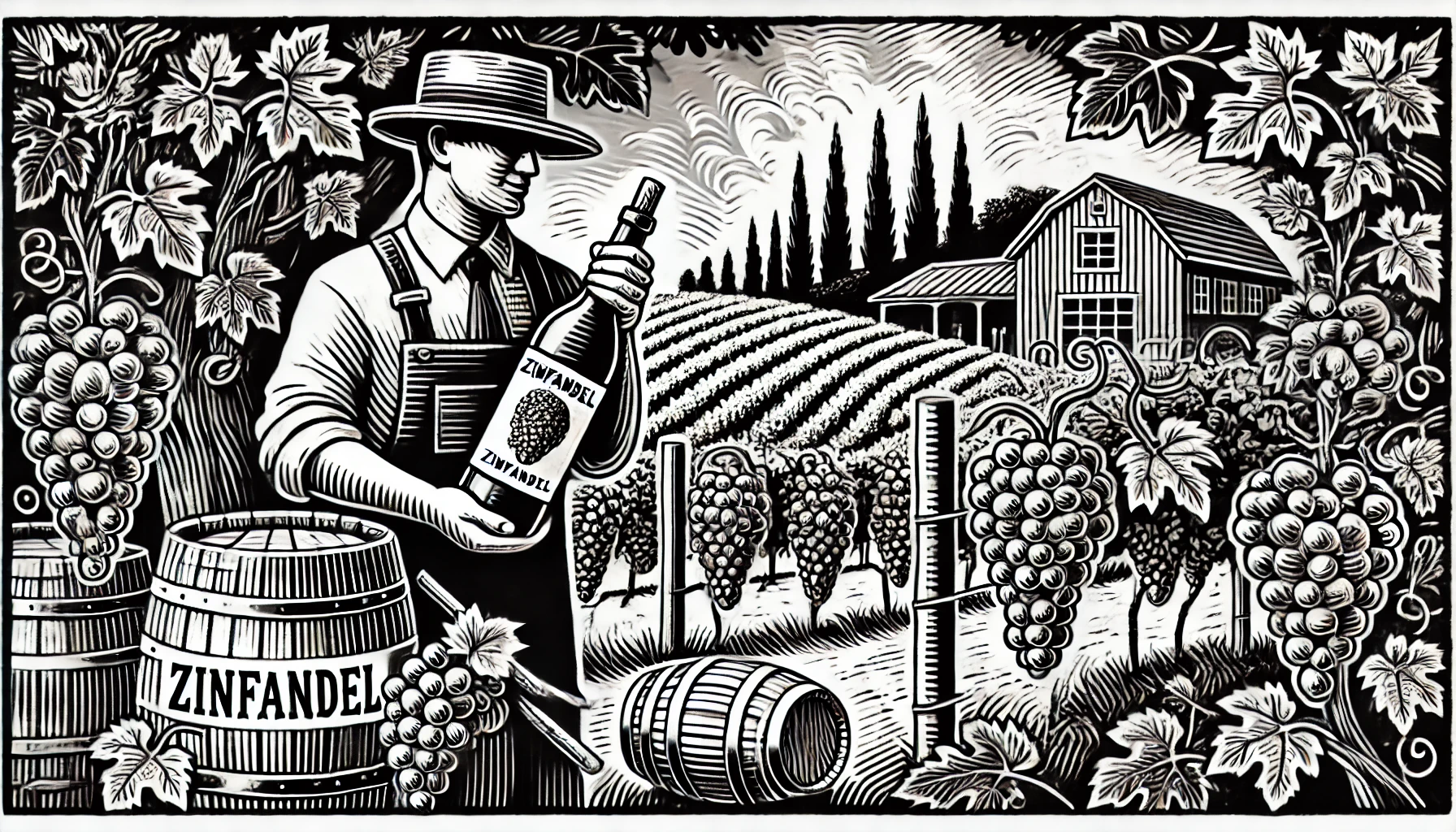
Zinfandel is a red grape variety that thrives predominantly in California, though its origins trace back to Croatia, where it is known as Crljenak Kaštelanski or Tribidrag. Introduced to the United States in the 19th century, Zinfandel has become one of California’s signature grapes. It produces a range of wine styles, from robust red wines to sweet rosés known as White Zinfandel.
Red Zinfandel wines are typically full-bodied with high alcohol content, often exceeding 14%. They exhibit bold fruit flavors such as blackberry, raspberry, plum, and dark cherry. These fruit-forward characteristics are complemented by spicy notes of black pepper, anise, and sometimes clove or cinnamon. Aging in oak barrels can introduce additional layers of vanilla, caramel, and sweet tobacco.
Old Vine Zinfandel refers to wines made from vines that are at least 50 years old. Some vineyards boasting vines over a century old. These older vines tend to produce lower yields of more concentrated fruit, resulting in wines with greater depth, complexity, and intensity. The rich flavors and sturdy tannins make Zinfandel an excellent candidate for aging, though many examples are enjoyable when young.
White Zinfandel emerged in the 1970s as a sweeter, lighter alternative. Winemakers produce it by removing the grape skins early in the fermentation process. This is resulting in a pink-hued wine with lower alcohol content. White Zinfandel offers flavors of strawberry, melon, and citrus. Its approachable style has made it popular among a broad audience, introducing many to the world of wine.
Zinfandel’s Food Pairings
Zinfandel’s versatility extends to food pairings. The robust red versions complement grilled meats, barbecue, spicy dishes, and hearty pasta. The wine’s fruity sweetness and spice can stand up to bold flavors, making it a favorite at cookouts and casual gatherings. White Zinfandel pairs well with lighter fare like salads, seafood, and mild cheeses.
California’s diverse microclimates allow Zinfandel to express different characteristics based on the region. Warmer areas like Paso Robles produce jammy, fruit-forward wines, while cooler regions like Sonoma’s Russian River Valley offer more refined and balanced expressions. Zinfandel’s adaptability and distinctive personality have solidified its place as an iconic American wine, celebrated by winemakers and wine lovers alike.
Curious about more wine terms and insights? Visit our Wine Wiki section and explore the basic wine terms for expert definitions and tips!